Table of Contents
- Introduction: The New Era of RTX PRO Series GPUs
- Overview of the RTX PRO Series
- Key Features of the RTX PRO Series
- Technical Specifications: Diving into the Details
- Comparisons with Previous Generations
- RTX PRO Series Variants
- Applications and Use Cases
- Examples of Bizon Models Supporting the NVIDIA RTX PRO Series
- Conclusion: The Future of Professional GPUs
NVIDIA RTX PRO 6000 Blackwell GPU with 96GB memory – tech specs
Introduction: The New Era of RTX PRO Series GPUs
NVIDIA continues to redefine professional graphics with its latest RTX PRO Series GPUs, headlined by the RTX PRO 6000 Blackwell. These cards elevate performance, energy efficiency, and reliability across diverse professional workflows. Whether rendering intricate 3D scenes, running complex AI models, or conducting real-time data simulations, these GPUs meet the demands of professional desktop workstations, data centers, and mobile solutions alike.
This new era emphasizes advanced ray tracing capabilities, robust VRAM configurations, and next-gen Tensor Cores. Professionals handling 8K video, extensive scientific datasets, or demanding visualization workloads now benefit from greater memory, faster processing, and optimized energy efficiency.
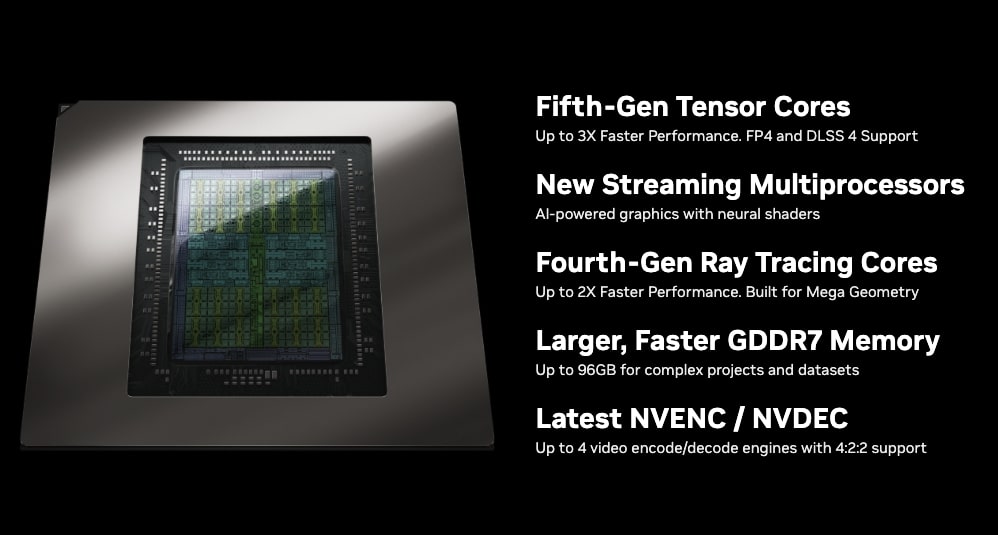
Overview of the RTX PRO Series
The RTX PRO 6000 Blackwell represents the pinnacle of NVIDIA's new professional lineup, delivering unmatched performance tailored specifically for high-demand professional applications:
- Workstation GPUs: Exceptional performance for 8K editing, advanced 3D rendering, and intensive computational tasks.
- Server GPUs: Optimized for data centers, AI model training, simulations, and analytical workloads.
- Max-Q GPUs: Efficient, mobile-focused GPUs designed for thin laptops, delivering desktop-grade performance in portable devices.
At the heart of this series is NVIDIA’s advanced Blackwell architecture, designed for minimal latency, enhanced throughput, and refined professional workflow optimization.
Key Features of the RTX PRO Series
- High VRAM Capacity: Up to 96GB of GDDR7 ECC VRAM for advanced rendering, AI workloads, and intensive data processing tasks.
- Advanced Blackwell Architecture: Maximized parallel performance and reduced latency tailored for professional workstation and data center environments.
- Enhanced Ray Tracing (RT Cores): Significantly improved ray tracing performance, essential for realistic visualization in professional graphics.
- AI-Focused Tensor Cores: Accelerates deep learning, enhancing AI model training and inference tasks across various industries.
Technical Specifications: Diving into the Details
The RTX PRO Series leverages the latest GDDR7 memory technology, offering rapid data throughput. ECC support enhances reliability for error-sensitive server workloads. Advanced cooling solutions ensure consistent, reliable performance under extended professional use.
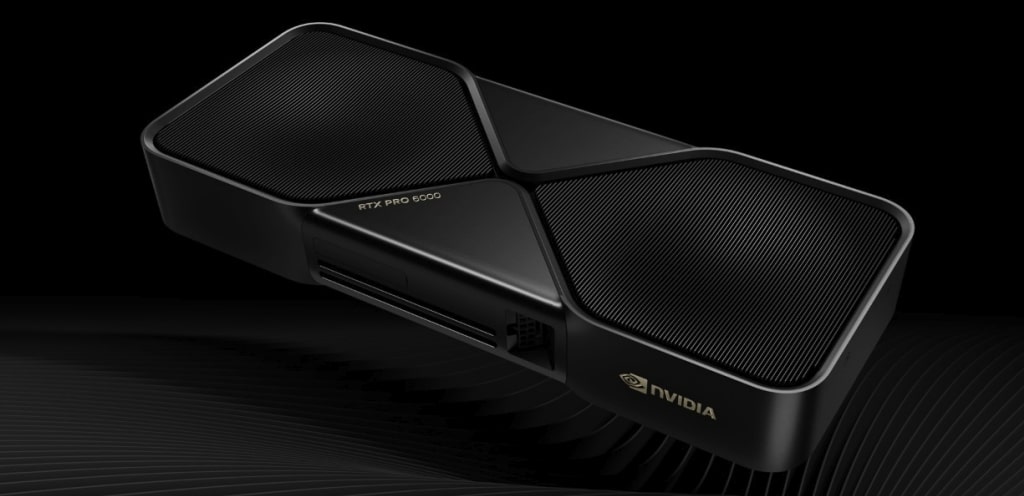
RTX PRO Blackwell Comparison Table
| Specification | RTX Pro 6000 | RTX Pro 5000 | RTX Pro 4500 | RTX Pro 4000 |
|---|---|---|---|---|
| Architecture | GB202 | GB202 | GB203 | GB203 |
| Transistors (Billion) | 92.2 | 92.2 | 45.6 | 45.6 |
| SMs | 188 | 110 | 82 | 70 |
| GPU Shaders (ALUs) | 24064 | 14080 | 10496 | 8960 |
| Tensor Cores | 752 | 440 | 328 | 280 |
| Ray Tracing Cores | 188 | 110 | 82 | 70 |
| Boost Clock (MHz) | 2600 | 2500* | 2500* | 2500* |
| VRAM Speed (Gbps) | 28 | 28 | 28 | 28* |
| VRAM (GB) | 96 | 48 | 32 | 24 |
| VRAM Bus Width | 512 | 384 | 256 | 192 |
| L2 Cache (MB) | 128 | 96* | 64* | 48* |
| Render Output Units | 192 | 144* | 96* | 80* |
| Texture Mapping Units | 752 | 440 | 328 | 280 |
| TFLOPS FP32 (Boost) | 125.1 | 70.4* | 52.5* | 44.8* |
| TFLOPS FP16 (FP4/FP8) | 1001 (4004) | 563 (2253)* | 420 (1679)* | 358 (1434)* |
| Bandwidth (GB/s) | 1792 | 1344 | 896 | 672* |
| TBP (watts) | 600 | 300 | 200 | 140 |
Note: Specifications such as memory, dimensions, and thermal design reflect official data but may vary based on exact product revisions or vendor-specific configurations.
Detailed GPU Specifications
- RTX PRO 6000 Blackwell: 24,064 CUDA cores, 752 Tensor cores, 188 RT cores, 1,792 GB/s memory bandwidth (512-bit interface). Price: ~$8,565. Released: March 18, 2025.
- RTX PRO 5000 Blackwell: 14,080 CUDA cores, 440 Tensor cores, 110 RT cores, 1,344 GB/s memory bandwidth (384-bit interface). Price: ~$4,569.
- RTX PRO 4500 Blackwell: 10,496 CUDA cores, 328 Tensor cores, 82 RT cores. Price: ~$2,623.
- RTX PRO 4000 Blackwell: 8,960 CUDA cores, 280 Tensor cores, 70 RT cores. Price: ~$1,546.
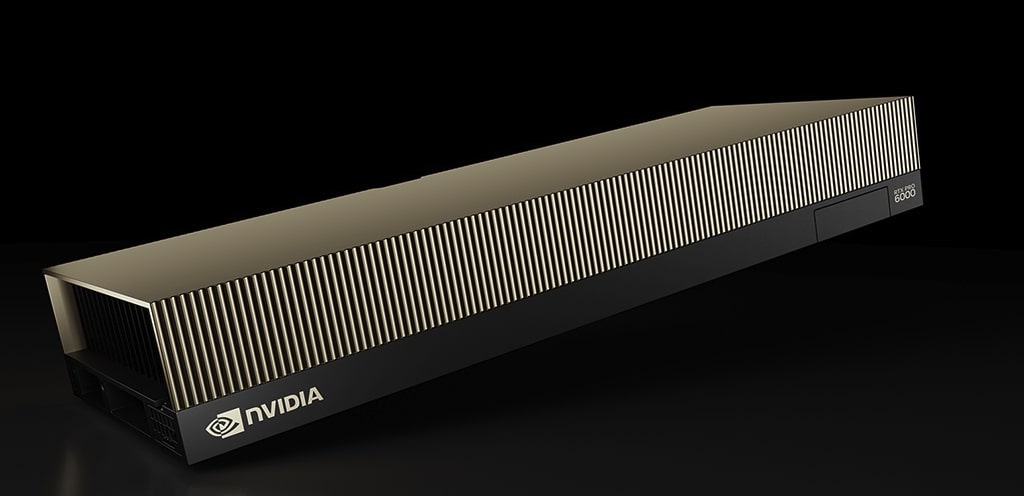
VRAM and Data Throughput
Across the lineup, GDDR7 with advanced data compression technologies ensures smooth data flow and minimized bottlenecks. Applications like molecular modeling, weather pattern analysis, and 8K compositing benefit immensely from large VRAM buffers and high bandwidth. ECC memory in server variants also delivers added stability for perpetual workloads.
Core Configuration
- CUDA Cores: Support massive parallelism in GPU-accelerated tasks, from ray-traced rendering to AI-driven analytics.
- Tensor Cores: Purpose-built for matrix operations and deep learning tasks, accelerating AI training and inference at scale.
- RT Cores: Allow real-time ray tracing with advanced global illumination, reflections, and other photorealistic effects.
Performance Highlights
- Rendering Speed: Path tracing performance can exceed older models by roughly 5%, enabling faster iteration for creative projects.
- AI Workloads: Up to 40% faster model training compared to the previous generation, significantly shortening R&D cycles in AI.
- Power Efficiency: Expect around 15% less power consumption, crucial for large data centers or sustained workstation use.
Comparisons with Previous Generations
RTX PRO Series vs. RTX 5090
- Memory Bandwidth: Up to 50% higher throughput, enabling real-time analytics on voluminous datasets.
- Thermal Improvements: Enhanced cooling systems let the GPUs sustain higher clocks under demanding loads.
- AI Advantage: New-generation Tensor Cores handle more complex neural architectures, reducing training times significantly.
Efficiency Improvements
- Dynamic Boost Technology: Balances power distribution between CPU and GPU for top-tier performance in tasks like 3D modeling or 4K/8K editing.
- WhisperMode: Lowers noise output by employing advanced fan curves and power management, maintaining a quiet environment.
RTX PRO Series Variants
Workstation Variant
Engineered for professional desktops, this edition thrives on intense graphical workloads and compute tasks. High TDP envelopes (300W–400W) allow the GPUs to sustain top clocks for resource-heavy tasks like large architectural renders or complex VFX. Liquid-cooling kits or advanced air-cooling solutions ensure thermal consistency under continuous load.
Server Variant
Designed for multi-GPU clusters in data centers, these passively cooled boards support ECC memory and high-density configurations. TDP ranges span 250W–450W, depending on whether active cooling or chassis-managed airflow is used. Ideal for HPC environments, these cards excel in training massive AI models, parallel scientific simulations, and virtualized desktops.
Max-Q Variant
Optimized for thin-and-light mobile systems, these GPUs operate at reduced clocks to maintain lower power and thermal footprints. Although performance doesn’t match the full workstation editions, they still deliver considerable computing power for on-the-go 3D modeling, video editing, and moderate AI tasks. TDP typically falls between 80W and 150W.
Applications and Use Cases
Professional Workstations
- Video Editing and Post-Production: Effortlessly handles 8K timelines, real-time color correction, and advanced VFX layering.
- CAD and Engineering: Enables complex 3D simulations and fluid rendering, improving design turnaround times.
AI and Machine Learning
- Model Training: Accelerates neural network training, reducing iteration cycles and boosting research efficiency.
- Inference: Enhances real-time applications like robotics, autonomous vehicles, and real-time data analytics.
3D Rendering and Animation
- Real-Time Ray Tracing: Provides realistic lighting, shadows, and reflections, crucial for film and game production.
- Simulation Tasks: Handles fluid, particle, and physics simulations, driving more detailed animation pipelines.
Examples of Bizon Models Supporting the NVIDIA RTX PRO Series
-
Bizon X5500
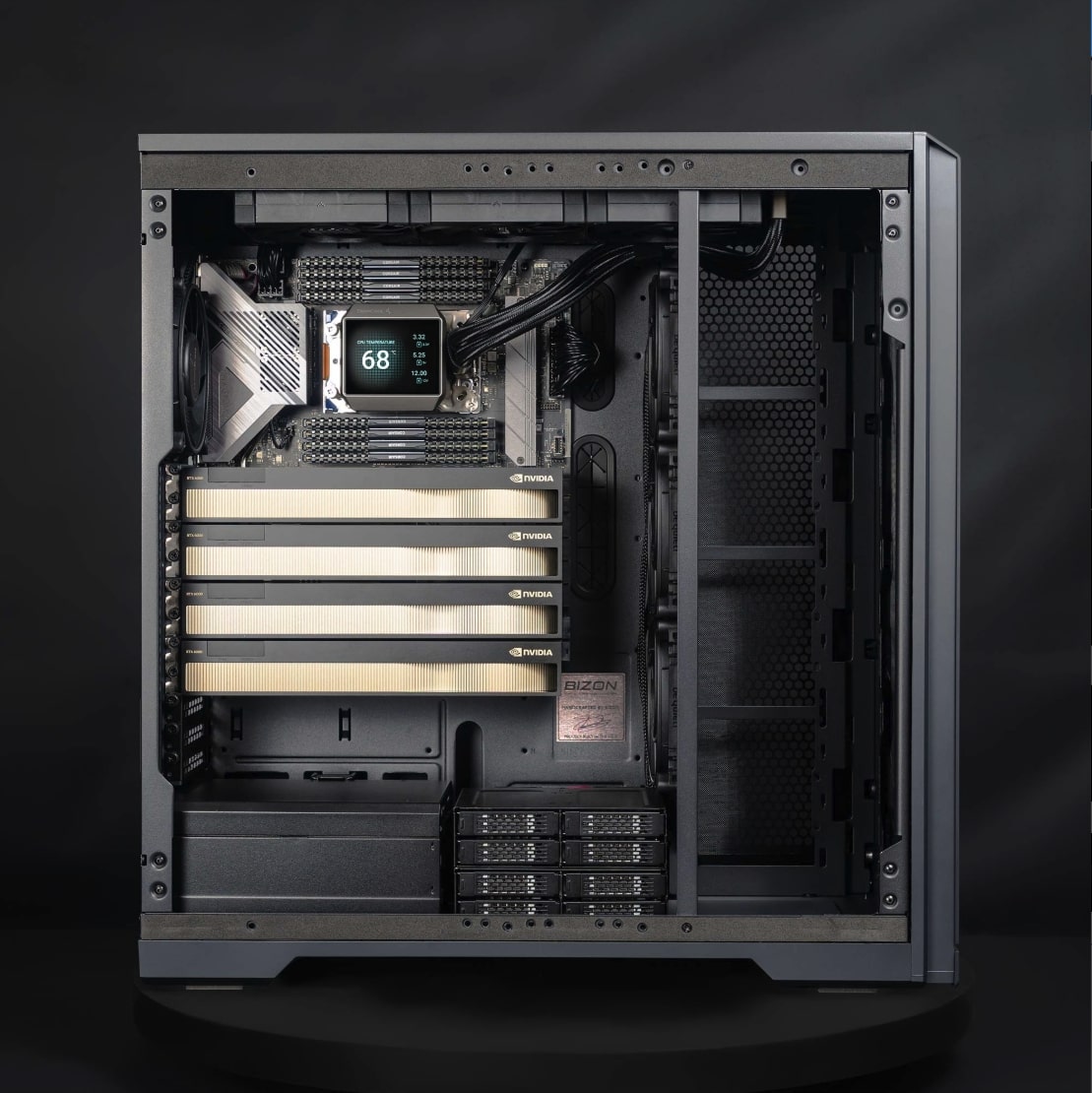
Designed for extreme performance, the Bizon X5500 supports up to four NVIDIA RTX PRO Series GPUs for unparalleled power in AI/ML workloads, MD simulations, VR development, and 3D animation.
-
Bizon ZX5500
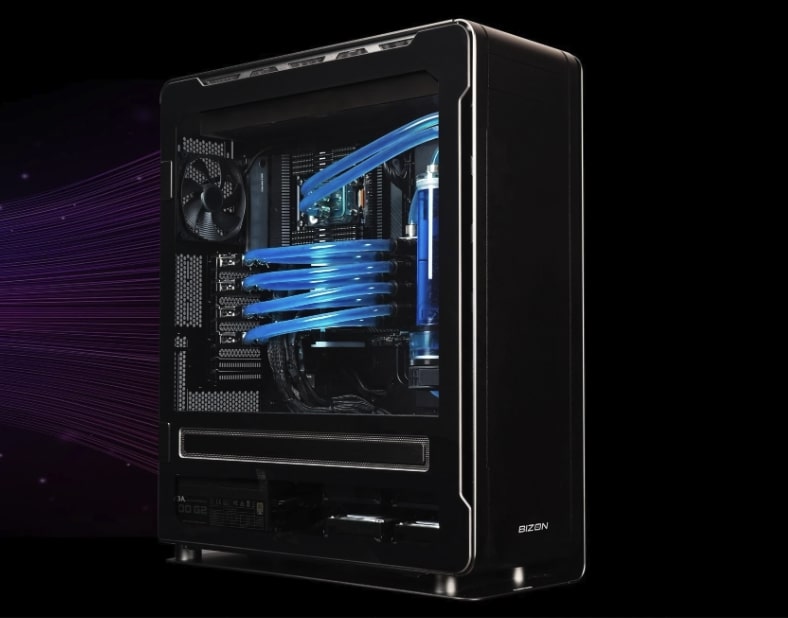
Versatile and powerful, the Bizon ZX5500 easily handles demanding AI training, inference, and large language model (LLM) workloads, with support for the latest NVIDIA RTX PRO Series GPUs.
-
Bizon ZX4000
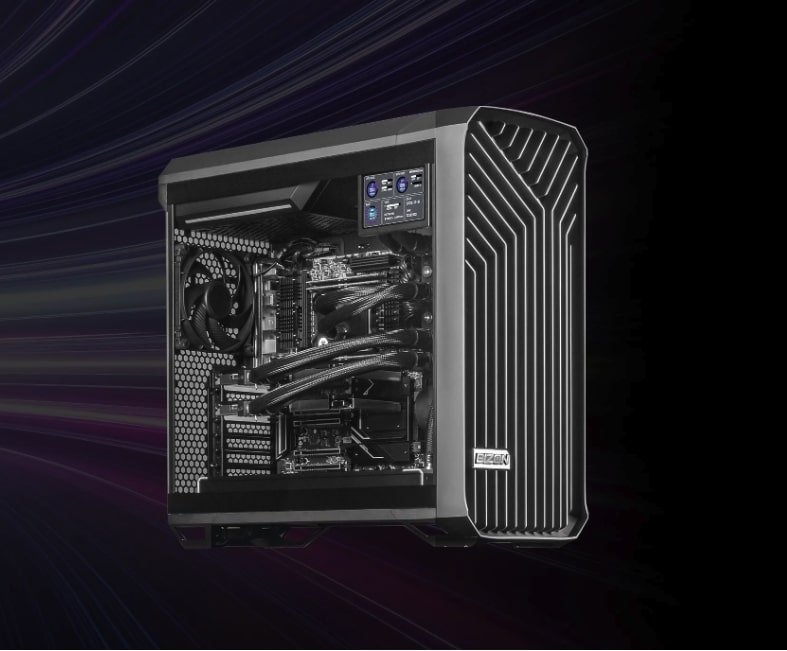
Compact yet powerful, the Bizon ZX4000 brings the capabilities of the NVIDIA RTX PRO Series to AI training and inference, making it an ideal choice for space-conscious professionals.
Conclusion: The Future of Professional GPUs
NVIDIA’s RTX PRO Series, led by the RTX PRO 6000 Blackwell, represents a significant advancement in GPU technology. These GPUs offer unprecedented VRAM capacity, performance enhancements for ray tracing and AI tasks, and improved power efficiency. Bizon's integration of these GPUs into specialized workstation solutions ensures professionals can tackle complex, future-oriented projects with unmatched confidence and efficiency.
As the tech landscape evolves, users adopting the RTX PRO Series benefit from a platform designed to meet today's demanding performance needs and anticipate tomorrow's challenges. Whether managing large-scale simulations, designing professional graphics, or editing complex visual content, the RTX PRO Series delivers performance, scalability, and reliability needed in the fast-paced digital world.